When I visited Vietnam for the first time, I had heard that Sapa Vietnam was relatively unspoiled, lush countryside, with terraced rice paddies, villages to explore, and I knew it would be a highlight of my itinerary. But when I looked online, all I found were pre-packaged tours to Sapa Vietnam that didn’t give me options, only narrowly focused descriptions of their exact plan. They weren’t very descriptive, didn’t paint a picture in my head, and didn’t allow me to make an informed decision about how I wanted to spend my time. Because we build personalized, custom tours to fit exactly what you want, we will try to describe here what Sapa Vietnam is like, what it’s good for and not good for, and what your options are. So you can start to get a feeling for how many days you want to stay there, how you want to spend your time, and when you meet with our itinerary planner, she will help you fill in the details to turn your thoughts into a plan–picking hotels, treks, activities and food options. Our goal is to be honest about what each area is like, what to expect and what not to expect.
When I first traveled to Sapa Vietnam from Hanoi, I took the 8 hour overnight train to Lao Cai, then a 1 hour van ride up the hillside to Sapa (the train doesn’t run up the mountain). I later found out I could have taken a bus/coach or private van direct from Hanoi for 6 hours. The old train was great to experience local travel, and cheaper, if not smaller quarters than European sleeper cars, but on my next visit I went direct.
People often use “Sapa” to describe the entire region, not only the smaller Sapa town of 7000, a hillside town overlooking the green
There are many ways to experience the Sapa region. Because of the 6-9 hour journey to get here, a day trip is not recommended. One night and two days is certainly enough time to experience the Sapa area, trek down through the rice paddies and villages, visit both the rural villages and more heavily touristed Cat Cat, and have a massage. But if you have the time, 2 nights is ideal to immerse yourself, and you can spend 3 if you like to relax, see all Sapa has, and explore the nooks and crannies.
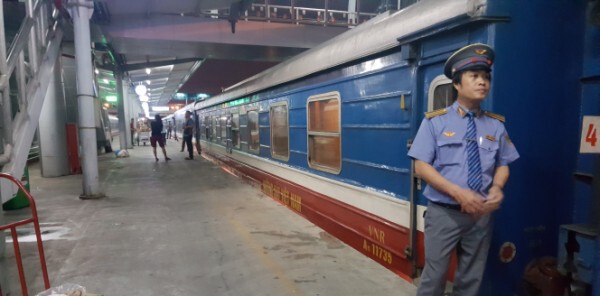
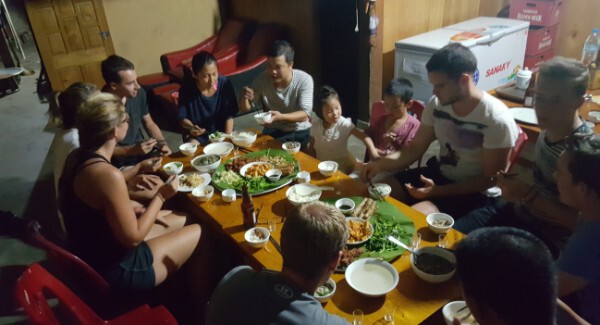
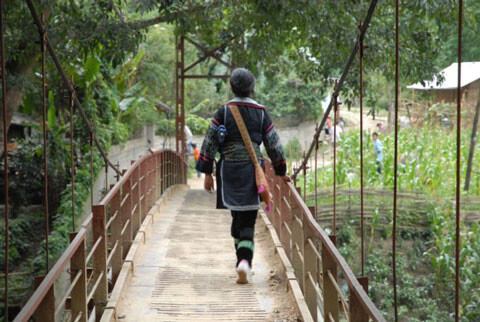
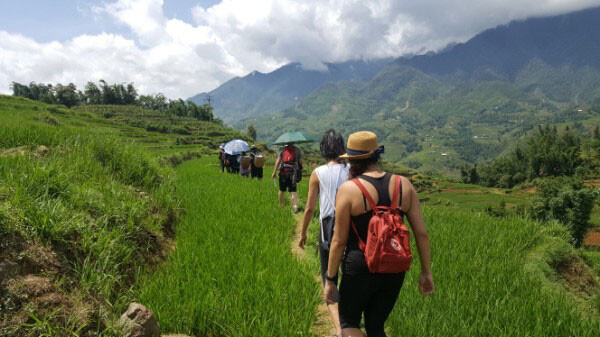
ADVENTURE
Hardy hikers can hike to the the top of Fansipan, for an unforgettable 2-day trek. Or the rest of us can take the new cable car in only 20 minutes. The views are amazing either way you go. You can also rent motorbikes to get farther into the countryside to visit local villages. The adventurer may also want to take the classic (translate to old) sleeper train to Sapa from Hanoi. It takes a little longer, but it is a safe and memorable experience as the train travels slowly through local villages.
Sapa has become a popular destination for visitors, and it is no longer the peaceful hilltown it used to be (see What to Expect below). If you have a little more time, and want to get farther off the beaten path, we’ll take you 45km past Sapa to Muong Hum for similar treks with fewer visitors, or 80k to the remote villages of Y Ty and Bat Xat to visit the Giay and Ha Nhi tribes! Allow at least 2 days if going this far.
HONEYMOON, RELAXING
Sapa is also known for inexpensive and abundant massages. Be sure to build in an hour a day to relax with a <$10 massage! Relaxing in Sapa can mean spending your time on easy hikes, riding a motorbike to the hill tribe villages, enjoying the cool, fresh weather and atmosphere of the town or walking hand in hand around the town after dark.
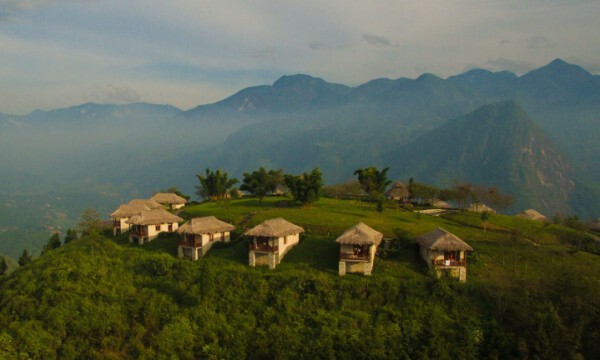

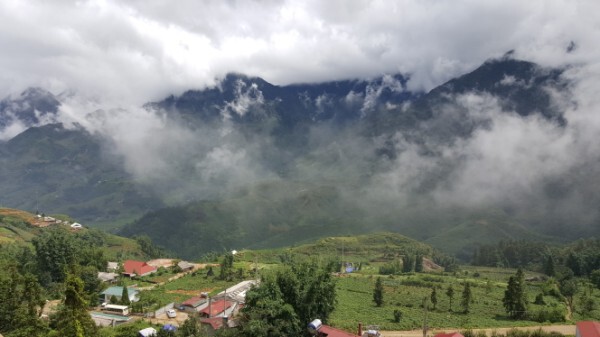

FAMILIES
FOODIE
Try the unique food in Vietnam! First, you can walk along the maze of streets or venture to the Sapa Market to try fried banana, corn or sweet potato cake, or grilled fresh sweet potato or grilled corn sold by street vendors as an appetizer! If you are brave enough, try a grilled balut (put one balut on a cup, make a hole on top of the balut, add marinade and enjoy! Walk further through small alleys where you can try different kinds of grilled sticks and rolls (beef, fish, pork or seafood on a stick or roll in mustard greens) and several glasses of inexpensive draft beer. Or you can get a seat in a local restaurant, order a fresh salmon from local salmon farms in Sapa or sturgeon and let your chef to perform his skill. Salmon hotpot is perfect on a cool evening! If you want to learn and cook your own food in Vietnam, we can also find suitable places for you here too!
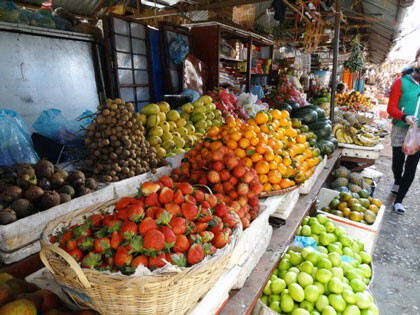
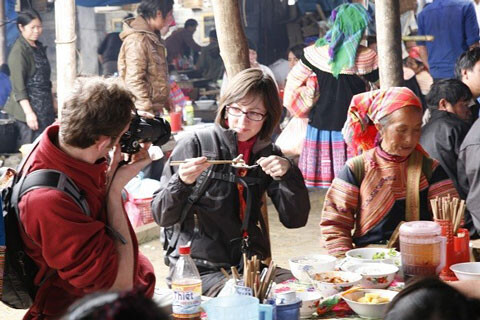
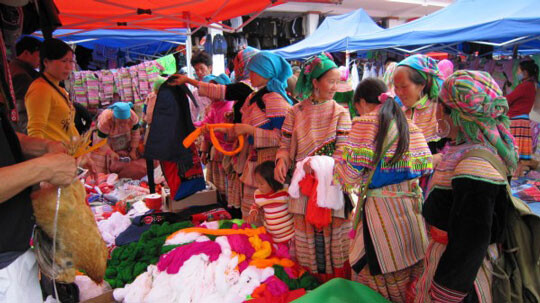
WHAT TO EXPECT
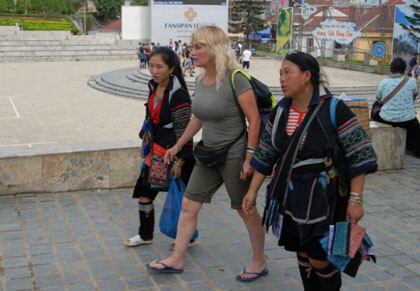
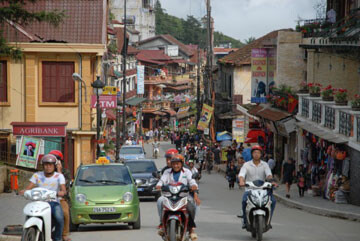
The native hilltribe women have learned that following trekkers and city walkers selling local crafts is a great business model. So best to expect and embrace it as part of the culture, while politely declining if you are not interested, or purchasing/donating if you are inclined. The local people are genuine and very friendly if you get to know them beyond their sales. We’ll recommend some great areas of Sapa town to explore, either with your guide or on your own, that aren’t on everyone’s radar.
You can also expect local hilltribe women wearing traditional dress, not as much for tourists as it has been their tradition to wear it outside the home for centuries. It is not the tradition for men to do so. Expect acres and acres of rice paddies lining the hillsides, passed down through the family for generations and still cultivated as a primary source of income. Expect to fill up your memory card with photos, and to wish you had more time!


 Tiếng Việt
Tiếng Việt Français
Français 日本語
日本語 한국어
한국어 中文 (中国)
中文 (中国)